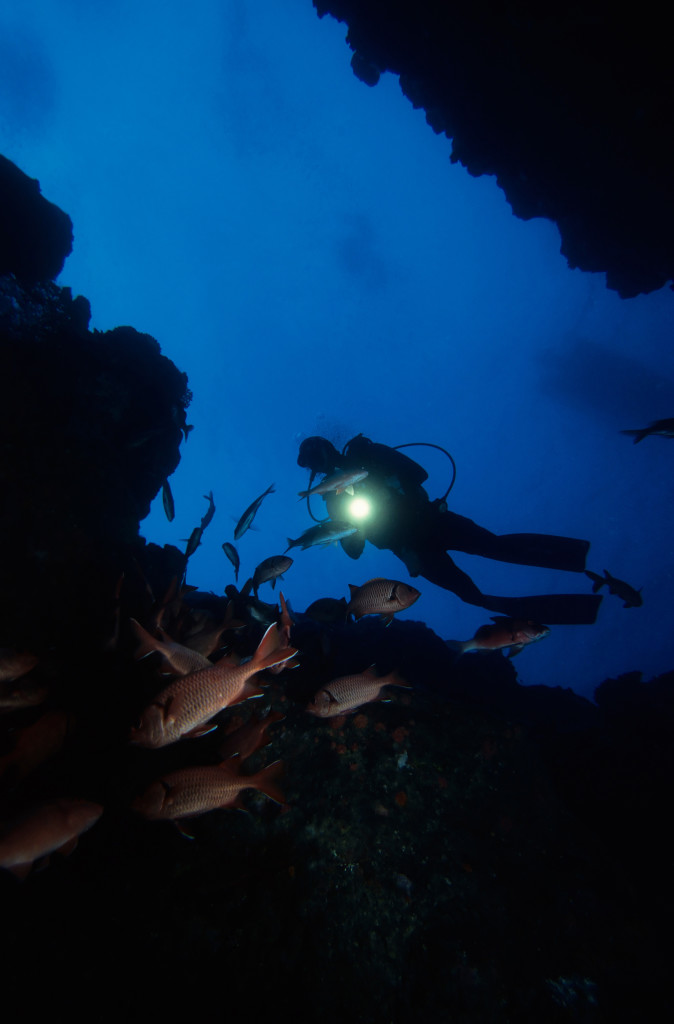Of course there’s standard gear for every dive: wetsuit or drysuit (or simply a rashguard if you’re in very warm waters), tank, BCD, regulator, fins and mask. Add a bit of personal gear, such as a camera, and on most dives that’s pretty much all you’ll need. But certain types of dives or those with a specific purpose call for specific pieces of equipment that you wouldn’t normally bring.
In this series of articles, we’ll help you put together checklists for various types of dives, starting with night diving.
What to Bring on a Night Dive
- Dive torch
This one comes as no surprise. Each diver must have his or her own light source, and torches come in many shapes and sizes. Choose one with a good light output and one that you find comfortable to carry around. Remember — you’ll be holding it for perhaps an hour or more, so comfort does matter. Dive torches with rechargeable batteries are a great choice, as you’ll otherwise find yourself going through quite a few disposables if you do a lot of night diving. Secure your dive torch to your body or BC via a lanyard as well in case you drop it.
- Backup dive torch
Dive torches fail. Not all the time — rarely, in fact — but complete enough night dives, and you’re likely to experience a torch failure. Maybe the bulb pops; maybe there’s a crossed wire somewhere; maybe you forgot to charge it — in any case, it’s important to have a small backup along for the dive, or ideally two, which is requirement for overhead diving. For backup torches, I prefer those with normal batteries, as they tend to discharge slower than rechargeable lights. Backups should also have a decent light output, though they’ll rarely be in the same league as your primary. They should be light and compact enough that you can carry them on the dive without giving it a second thought.
- Marker light
A marker light is a light source you affix to your gear, usually on your back, to help your buddy, dive team, or guide to see you. Even with a torch, it can be hard to spot divers from behind at night. Generally speaking, you have two choices: electrical strobes or snaplights. The former, a small, electrical light, either emits light continuously or flashes. Some of these require you to turn them on; others activate automatically when you enter the water. The latter requires you to snap them to mix two chemical compounds inside, which then makes them emit light.
- Whistle
If you need must attract the attention of your dive boat, buddies, or someone on land, your torch is a good signaling device. But if it’s out of power, that’s not an option. Bring a backup signaling device such as a whistle or air horn.
- Thicker wetsuit
Since air temperatures tend to drop at night, we tend to get colder on night dives, so wear slightly thicker exposure protection or at least a skin underneath your wetsuit. Nothing ruins a dive faster than shivering the entire time, and shivering afterwards is no fun either.


